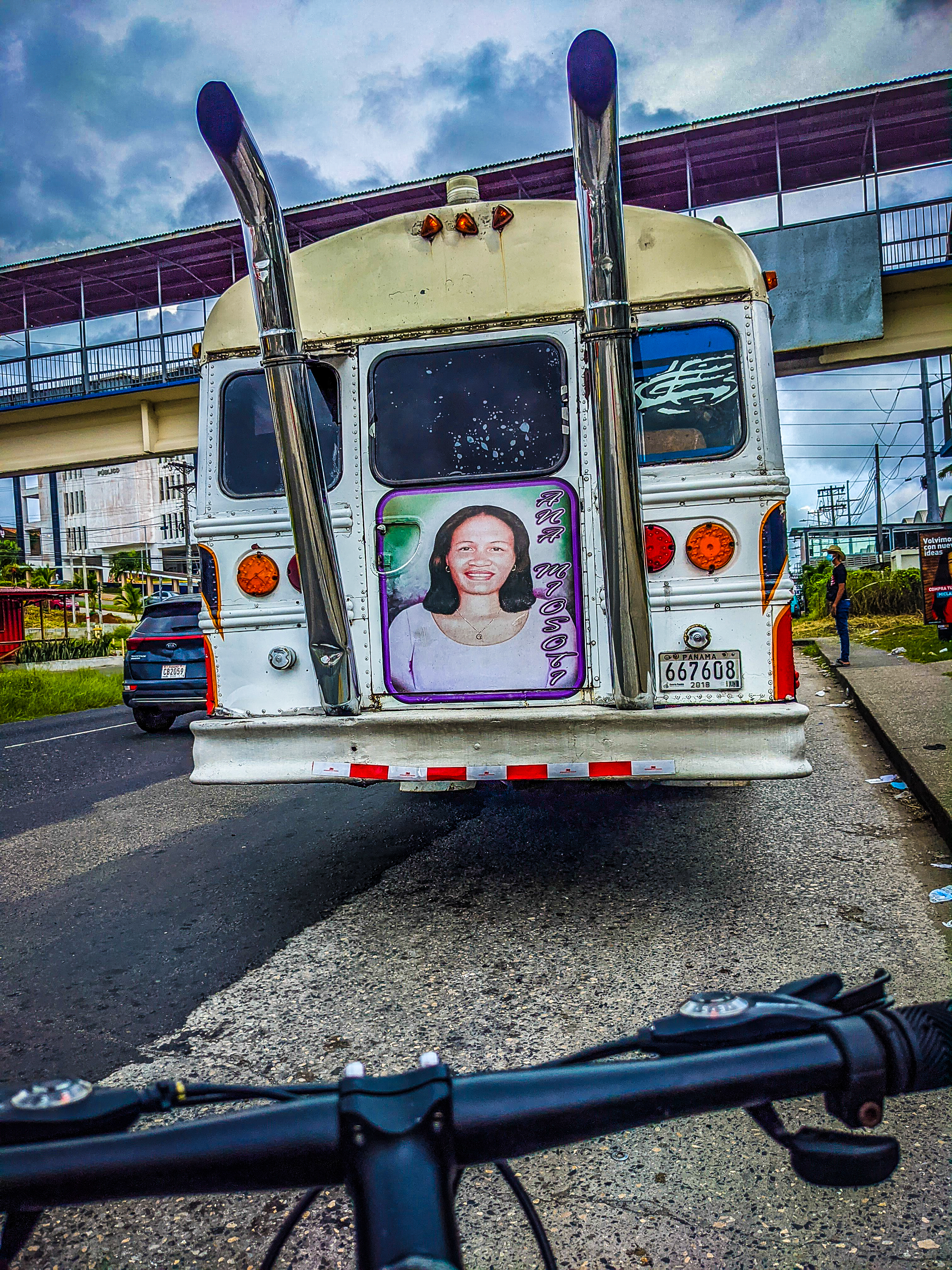From Gamboa, where the Panama Canal road ends, only the canal railroad continues beyond, first skirting the Soberania National Park, then, elevated on concrete piles, it crosses the Gatun Lake all the way to Colon on the Caribbean side of the country.
Having to backtrack to the junction where I turned for Gamboa the day before, the next section of the road heading into the interior away from the canal, the secondary road traverses a beautiful stretch of the jungle. Alas, narrow with all the traffic it carries from Panama City, it gets very scenic and enjoyable to ride when the traffic subsides and the jungle canopy allows one to admire the rainforest.

In Chilibre, however, the scenic part ends as the jungle road reaches the mayhem of the Carretera Transístmica.
There are two highways connecting Pacific and Atlantic oceans along the Panama Canal isthmus – Panama Canal Expressway and Carretera Transístmica. The first is a toll road and cops will load you and your bike on a car and boot you out to the nearest exit, should you even get on this highway. The Expressway has a nice wide shoulder, so would be a way to ride between the two oceans, but unfortunately you can’t.

Carretera Transístmica is the old two-lane highway connecting Panama City with Colon. It carries most of the traffic between the two cities and is a lifeblood of the settlements along it. It has an intermittent shoulder-parking strip, if there is any at all, with a tarmac usually potholed, or overgrown by weeds and bushes. The lanes are narrow, traffic is constant, with trucks, chicken buses, and anything else with wheels. Traffic can be chaotic and the scenery along the road is nothing to write home about. Only occasionally, you may get a distant view of the canal, but mostly nil, views concealed by vegetation. Either you pass through ramshackle settlement areas or you are too busy avoiding potholes. Unfortunately, there is no better way to ride. This is the only option to cycle coast to coast between Panama City and Colon.
While the nature and small communities along the way are unimpressive and often rough on the edges, it’s the Diablos Rojos – Red Devils – the famous painted Panama buses that steal the show and you keep most in your memory of this passage. The brightly painted folk art motives on dated, formerly American school buses, adopted in Panama to vehicles of public transport, ply roads all over Panama and hold your attention not only for their variety of captivating designs and decor as for their often unpredictable style of driving. They sway in and out of traffic, dart impulsively to roadside to offload or pick up passengers, forcing you, the cyclist, to stay constantly alert to their whims and not the other way around.


